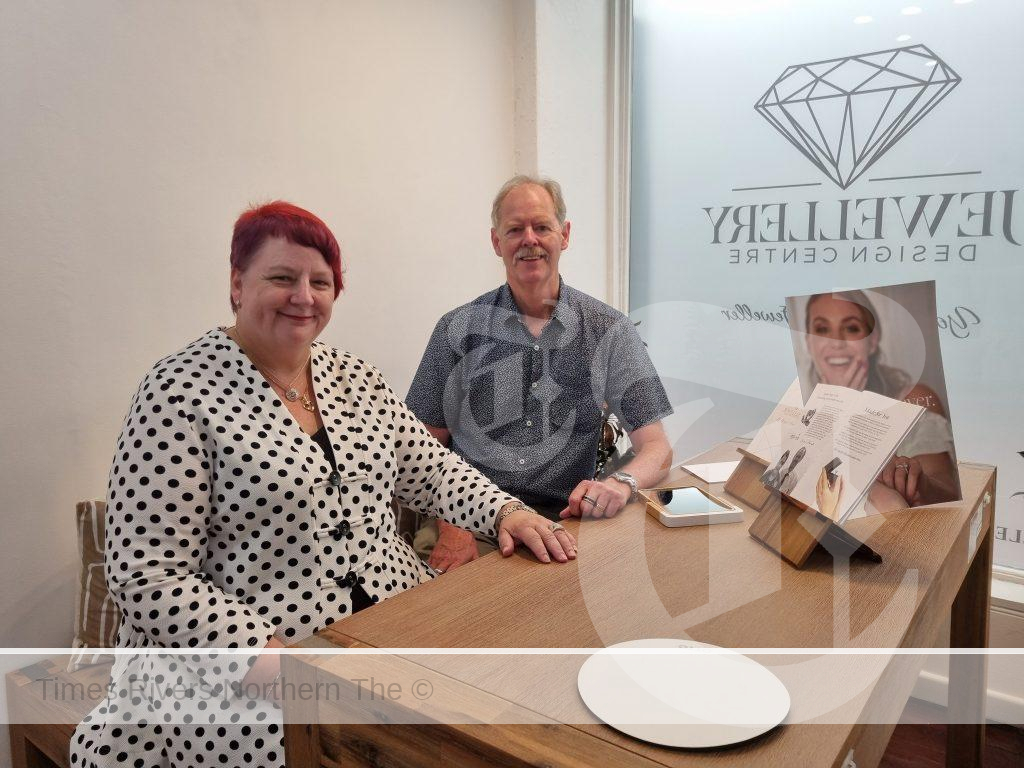Anzac Day Services Northern Rivers – Comprehensive Guide for the Region
This Thursday April 25, 2024, communities across our region will come together to commemorate Anzac Day with various services and marches. Here’s what’s planned for each area:
Richmond Valley
Casino:
- Dawn Service: Assemble at 5:15 AM on Canterbury Street at the Casino RSM Club. The march to the Mafeking Lamp starts at 5:30 AM.
- Mid-morning Service: Gather at 10:00 AM in Graham Place for a 10:15 AM march to Casino RSM Club.
- Evening Retreat: A brief service at 4:55 PM at the Mafeking Lamp.
Coraki:
- Assemble at 10:00 AM at the Coraki Hotel for a 10:30 AM march to the cenotaph in Riverside Park.
Broadwater:
- Community Dawn Service at 5:30 AM at Broadwater Community Hall, followed by a community breakfast.
Evans Head:
- Dawn Service: Gather at 5:20 AM on Woodburn Street near the bus stop, marching to Memorial Park for a 5:30 AM service. Breakfast at the RSL Club Evans afterward.
- Day Service: Assemble at 10:00 AM on Park Street, marching at 10:30 AM to Club Evans in McDonald Place.
- Additional Services: A bus departs the RSL at 8:00 AM for services at the memorial aerodrome and war cemetery, with a special flyover by the Amberley Air Force.
Rappville:
- Dawn Service at 5:30 AM at the Anzac Memorial on Nandabah Street.
- Day Service: Gather at the Rappville Post Office at 10:30 AM for an 11:00 AM service at the same memorial.
Woodburn:
- Assemble at 9:45 AM at the old Woodburn Post Office, marching at 10:00 AM to the memorial in Riverside Park for a service.
Kyogle LGA
Kyogle:
- Dawn service at 5:30 AM at the cenotaph.
- Assemble at 9:15 AM for a 9:30 AM march through the town center, concluding with a 10:00 AM service at the cenotaph.
Woodenbong:
- Dawn service at 5:15 AM at the Woodenbong water tower, followed by a Gunfire Breakfast.
- Gather for a 10:40 AM march to the Woodenbong Public Hall for an 11:00 AM Anzac Memorial Service. The day concludes with a wreath-laying at 11:45 AM and a Diggers Luncheon at 12:30 PM at the RSL Hall.
Bonalbo:
- Dawn service at 5:30 AM at Patrick McNamee Anzac Memorial Park, followed by a Gunfire Breakfast at the Bonalbo Bowling and Recreation Club.
- An 11:00 AM service at the Bonalbo Community Hall.
Old Bonalbo:
- A 9:30 AM service at Old Bonalbo Soldiers’ Memorial Hall.
Tabulam:
- Gather at 10:30 AM on Clarence Street for a march to the Light Horse Memorial, where a service and wreath laying will take place at 11:00 AM, followed by refreshments at noon at the Tabulam Hotel.
Mallanganee:
- A service and wreath-laying ceremony at 11:00 AM at Memorial Park.
LISMORE
Returned and Services League of Australia – City of Lismore sub-Branch ANZAC Day Committee wishes to invite the community to Lismore’s ANZAC Day March and Services, commemorating the fallen from Gallipoli and all other subsequent wars and deployments in which Australian Defence personnel have been involved.
At 5am the traditional Dawn Service will be held at the Lismore Cenotaph, following the March from the “Old Post Office Corner” on the corner of Magellan and Molesworth Streets.
The main March will commence at 9am and will depart Browns Creek Carpark, proceeding along Molesworth Street to the Lismore Memorial Baths. Followed by the ANZAC Day commemorative service at the Lismore Cenotaph.
The Lismore City Bowling Club will host a breakfast for veterans, families and community members.
Clarence Vally
Below is information that has been provided to Council by RSL Sub-branches across the Clarence Valley. If you are wishing to lay wreaths, please contact the sub-branch organiser for your area.
RAMORNIE (Sunday, 21 April)
- 10:45am – Ramornie Cenotaph
Contact: Barry Whalley – 0428 432 014
GRAFTON (ANZAC DAY Thursday, 25 April)
- 5:50am – Muster at Memorial Park
- 6:00am – Dawn Service at Memorial Park
- 6:30am – Gunfire breakfast at GDSC – $10pp (donated to charity)
- 9:30am – March from Market Square
- 10:00am – Commemoration Service at the Cenotaph, Memorial Park
Contact: Denis Benfield – 0412 410 474
SOUTH GRAFTON (ANZAC Day Thursday, 25 April)
- 4:50am – March from New School of Arts
- 5:00am – Dawn Service at the Cenotaph, Lane Boulevard
- 7:00am – Gunfire breakfast at South Grafton Ex-Servicemen’s Club
- 10:50am – March from New School of Arts
- 11:00am – Commemoration Service at the Cenotaph, Lane Boulevard
- Contact: Barry Whalley – 0428 432 014
ULMARRA (ANZAC Day Thursday, 25 April)
- 10:40AM – Muster for march at Ulmarra Cenotaph
- 11:00am – Commemoration Service at Memorial Park
- Contact: Robert McFarlane – 0407 415 923
CHATSWORTH ISLAND (ANZAC Day, Thursday 25 April)
- 5:15am – Dawn service at the Cenotaph
Followed by a sausage sizzle
Contact: John Goodwin – 0419 282 555
COPMANHURST (ANZAC Day Thursday, 25 April)
- 10:45am – Commemoration Service at Copmanhurst Memorial Cenotaph
Contact: Denis Benfield – 0412 410 474
GLENREAGH (ANZAC Day Thursday, 25 April)
- 5:30am – Dawn Service at the Glenreagh School of Arts
- Followed by a cooked breakfast in the hall (donation)
Contact: Noel Backman – 0434 197 994
HARWOOD (ANZAC Day Thursday, 25 April)
- 5:15am – Muster at Harwood Hall
- 5:30am – Dawn Service at Harwood Cenotaph in River Street
- Followed by Gunfire breakfast in the Harwood Hall (donation)
Contact: Helen Briscoe – 0431 677 110
Barry Smith – 0427 469 495
ILUKA (ANZAC Day Thursday, 25 April)
- 5:30am – Commemoration service
BBQ provided after service – outside hall (donation)
- 10:30am – March from Iluka Public School
- 10:45am – Commemoration Service and wreath laying
Followed by free morning tea
- Contact: Phil Bradmore – 0448 465 269
LAWRENCE (ANZAC Day Thursday, 25 April)
- 5:45am – Muster at Lawrence Hall for march to Memorial Park
- 6:00am – Dawn Service at Memorial Park
- 9:45am – Muster at Lawrence Hall for march to memorial park
- 10:00am – Commemoration Service at Memorial Park
- Contact: Bryan Whalan – 0417 232 809
LOWER SOUTHGATE (ANZAC Day Thursday, 25 April)
- 3:00pm – Commemoration Service at Lower Southgate War Memorial, Doust Park
Contact: Pauline Glasser – 0419 986 554
MACLEAN (ANZAC Day Thursday, 25 April)
- 5:30am – Dawn Service at Cenotaph
- 10:40am – March from Esplanade
- 11:00am – Commemoration Service at Cenotaph
Followed by lunch at Maclean Bowling Club (members only)
- Contact: Trevor Plymin – 0415 400 658
TULLYMORGAN (ANZAC Day Thursday, 25 April)
- 5:15am – Muster for march at Tullymorgan School
- 5:20am – Dawn Service at the Tullymorgan School
Followed by gunfire breakfast (gold coin donation)
- Contact: Sue Searles – 0408 408 749
WOOLI (ANZAC Day Thursday, 25 April)
- 5:30am – Dawn Service at the Cenotaph
- 6:00am – Breakfast for those attending the Dawn Service at Wooli Bowling & Recreation Club (gold coin donation)
- 10:45 am – Assemble at Wooli Bowling & Recreation Club for march
- 11:00am – Commemoration Service at the Cenotaph
Lunch for ex-service personnel and partners at the Wooli Bowling & Recreation Club
- Contact: Brian Frederiksen – 0421 077 718
YAMBA (ANZAC Day Thursday, 25 April)
- 5:45am – Dawn Service at the Cenotaph
- 9:30am – Assemble for a 9.30am march in Clarence Street opposite Stella Motel, Clarence Street, for march to Cenotaph
- 9:35am – Commemoration Service to commence at completion of the march
Followed by morning tea at Yamba RSL Hall
- Contact: Donna Ford – 0498 330 024
CHATSWORTH ISLAND (ANZAC Day, Thursday 25 April)
- 5:15am – Dawn service at the Cenotaph
Followed by a sausage sizzle
- Contact: John Goodwin – 0419 282 555
Byron Shire
Thursday, 25 April 2024 04:30 AM to 12:00 PM. Services will be held across the Byron Shire to commemorate ANZAC Day.
Bangalow
- 10:30am – March from the Bangalow Hotel to the Cenotaph
Brunswick Heads
- 4:30am – March from the RSL Hall to the Cenotaph
Byron Bay
- 5:30am – Meet at the memorial Gates in Tennyson Street
- 10:30am – Meet at the memorial Gates in Tennyson Street
Mullumbimby
- 4:30am – Meet at the Cenotaph in Dalley Street
- 11:00am – March from Railway Station to the Cenotaph in Dalley Street.
Ballina Shire
Join us at the RSL Memorial Park Cenotaph for the first commemorative event of ANZAC Day. This service marks the time men of the ANZAC approached the Gallipoli beach and honors the traditional ‘stand-to’ ritual.
- 6:00 AM – Poppy Collection / Ballina RSL Breakfast
After the Dawn Service, collect your poppies from the ANZAC structure and enjoy a “In The Trenches Breakfast” at the Ballina RSL club for just $5. Open to the public – no bookings!
The ANZAC Day March will start at the far end of River Street, near Woolworths, moving towards the RSL and Memorial Park.
- 10:55 AM – ANZAC Day Service
The main service will be held at RSL Memorial Park adjacent to the Ballina RSL Club.
- 11:18 AM – RAAF Fly Past
- 11:30 AM – Ballina RSL Lunch
Conclude the morning’s commemorations with lunch at the Ballina RSL Club.
- 2:00 PM – Brownie & Friends’ Two-Up
Join us for a game of two-up at Brownie’s. Learn the rules and participate in this traditional ANZAC Day betting game. Open to all of legal gambling age.
Additional Information: Open to the public. All are welcome to join in remembrance and honor of our veterans.
Tweed Heads & Coolangatta
Dawn Service 5.45am
Held at Chris Cunningham Park, Wharf Street, Tweed Heads
Anzac Day Service 10.55am – 11.45am
Held at Chris Cunningham Park, Wharf Street, Tweed Heads
Burringbar – Old Bakery at 0845hrs for the march to the Memorial. Service to commence at 0900hrs. Refreshments and Bowls at the Sports Club after the service.
Cudgen – Assemble at Crescent Street at 0410 hrs. March to service at Collier Street Cenotaph at 0428hrs.
Kingscliff dawn – Assemble at Turnock Street at 0555hrs. Service at Kingscliff War Memorial. Breakfast at the Kingscliff Beach Bowls Club at 0700hrs.
Kingscliff main – Assemble at 1000hrs. March commencing at 1020hrs. Service at the Memorial at 1100hrs. Cars available for non-marchers.
Murwillumbah dawn – Assemble at War Memorial at 0520hrs. Breakfast in the Services Club at 0615hrs. Veterans and children under 12 free, others $5.
Murwillumbah main – Marchers assemble in Brisbane Street. Schools and other organisations assemble Main Street, opposite the Post Office at 1010hrs. March off at 1030hrs for Cenotaph Service at 1045hrs. Transport available for non-marchers at the assembly area.
Pottsville – Assemble at 0730hrs at Pottsville Beach Chemist. March off 0745hrs for the service at 0800hrs at the Cenotaph ANZAC Park. Breakfast at Pottsville Beach Sports Club after the service.
Tumbulgum – Memorial Gates 0430hrs. Breakfast in the hotel after the service.
Tweed Heads – Assemble on pathway behind Chris Cunningham Park at 0545hrs. Short wreath laying service at Chris Cunningham Park at 0630hrs.
🎖 Tweed Heads – Assemble in Boundary Street at 1000hrs, march off at 1030hrs down Boundary Street, left into Wharf Street and left to the Memorial in Chris Cunningham Park. Service of Remembrance from 1100hrs.
Tyalgum – Memorial 0515hrs. Breakfast in the hotel after the service.
Uki – War Memorial 0420hrs. Breakfast in the hall after the service.
These services offer a poignant reminder of the sacrifices made by our armed forces and provide an opportunity for community members of all ages to come together in remembrance.
For more local news, click here.





 Tweed Shire News2 years ago
Tweed Shire News2 years ago
 Motoring News1 year ago
Motoring News1 year ago
 COVID-19 Northern Rivers News3 years ago
COVID-19 Northern Rivers News3 years ago
 COVID-19 Northern Rivers News3 years ago
COVID-19 Northern Rivers News3 years ago
 Northern Rivers Local News2 years ago
Northern Rivers Local News2 years ago
 Health News3 years ago
Health News3 years ago
 COVID-19 Northern Rivers News3 years ago
COVID-19 Northern Rivers News3 years ago
 NSW Breaking News3 years ago
NSW Breaking News3 years ago

































